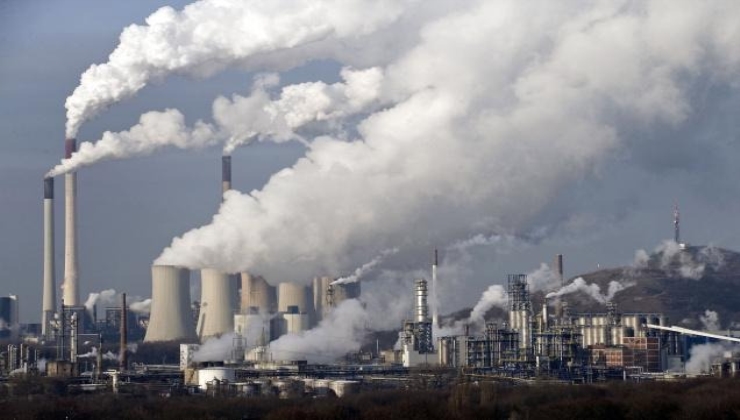Air pollution is a pressing global issue with far-reaching consequences for human health and the environment. While numerous sources contribute to the deterioration of air quality, industrial facilities stand out as significant contributors to this problem. From factories to power plants, industrial operations release various pollutants into the atmosphere, leading to adverse effects on both local and global scales. In this blog, we’ll delve into the ways industrial facilities cause air pollution, examining the pollutants they emit, the processes involved, and their impacts.
1. Emissions from Combustion
One of the primary ways industrial facilities contribute to air pollution is through the combustion of fossil fuels for energy generation. Power plants, refineries, and manufacturing facilities often rely on burning coal, oil, and natural gas to produce electricity or run machinery. During combustion, these fuels release a cocktail of pollutants into the air, including carbon dioxide (CO2), sulfur dioxide (SO2), nitrogen oxides (NOx), and particulate matter (PM).
2. Industrial Processes
Beyond combustion, industrial processes themselves can be significant sources of air pollution. Chemical manufacturing, for instance, involves the production of various substances, some of which are volatile organic compounds (VOCs) that can evaporate into the atmosphere. Additionally, certain manufacturing processes release hazardous air pollutants (HAPs), such as benzene, formaldehyde, and mercury, which pose serious health risks even at low concentrations.
3. Transportation and Shipping
Industrial facilities often require the transportation of raw materials, products, and waste materials, contributing to air pollution through vehicle emissions. Trucks, ships, and trains used for transporting goods emit pollutants like nitrogen oxides, particulate matter, and volatile organic compounds. Ports and distribution centers, in particular, can be hotspots of pollution due to the large volume of cargo handled and the heavy machinery involved.
4. Dust and Particulate Matter
Many industrial activities generate dust and particulate matter, which can become airborne and contribute to air pollution. Mining operations, construction sites, and certain manufacturing processes produce significant amounts of dust particles that can contain harmful substances like heavy metals and silica. Once airborne, these particles can travel long distances and pose health risks to nearby communities.
5. Agricultural Activities
E-farming, using advanced tech like IoT sensors and drones, optimizes resources, cuts chemical use, and reduces emissions by monitoring soil and crops. It curbs air pollution by decreasing fertilizer and pesticide usage and discouraging agricultural burning. This eco-friendly approach ensures food security while addressing environmental concerns.
6. Waste Management
The disposal of industrial waste can also lead to air pollution. Landfills emit methane as organic waste decomposes, while incineration of waste materials releases a variety of pollutants, including dioxins, furans, and heavy metals. Improperly managed waste facilities can pose serious health risks to nearby communities through the release of toxic gases and particulate matter into the air.
Impacts of Industrial Air Pollution
The air pollutants emitted by industrial facilities have wide-ranging impacts on human health, ecosystems, and the climate. Exposure to these pollutants can lead to respiratory problems, cardiovascular diseases, and neurological disorders, particularly in vulnerable populations such as children, the elderly, and individuals with pre-existing health conditions. Air pollution also damages crops, forests, and bodies of water, affecting biodiversity and ecosystem services.
On a global scale, industrial air pollution contributes to climate change by releasing greenhouse gases like carbon dioxide and methane, which trap heat in the atmosphere and lead to rising temperatures, altered weather patterns, and more frequent extreme weather events. Furthermore, air pollution from industrial sources can travel across national borders, affecting air quality in regions far from the original sources of emissions.
Mitigation Strategies
Addressing industrial air pollution requires a multi-faceted approach involving technological innovations, regulatory measures, and public awareness campaigns. Implementing cleaner production technologies, such as renewable energy sources and energy-efficient processes, can reduce emissions from industrial facilities. Strict enforcement of emission standards and pollution control measures is essential to limit the release of harmful pollutants into the air.
Additionally, promoting sustainable practices such as recycling, waste reduction, and cleaner transportation can help minimize the environmental footprint of industrial activities. Collaboration between governments, industries, and civil society is crucial to developing comprehensive strategies for mitigating air pollution and safeguarding public health and the environment.
Conclusion
Industrial facilities play a significant role in contributing to air pollution through various activities such as combustion, industrial processes, transportation, and waste management. The pollutants emitted by these facilities have detrimental effects on human health, ecosystems, and the climate, highlighting the urgent need for action to address this issue. By adopting cleaner technologies, enforcing stricter regulations, and promoting sustainable practices, we can mitigate industrial air pollution and create a healthier and more sustainable future for all.
In conclusion, industrial facilities are major contributors to air pollution, emitting a wide range of pollutants through their various operations. From combustion and industrial processes to transportation and waste management, these activities release harmful substances into the atmosphere, posing serious risks to human health, ecosystems, and the climate. Addressing industrial air pollution requires concerted efforts from governments, industries, and individuals to implement cleaner technologies, enforce regulations, and promote sustainable practices. Only through collective action can we effectively combat industrial air pollution and protect the health and well-being of current and future generations.

